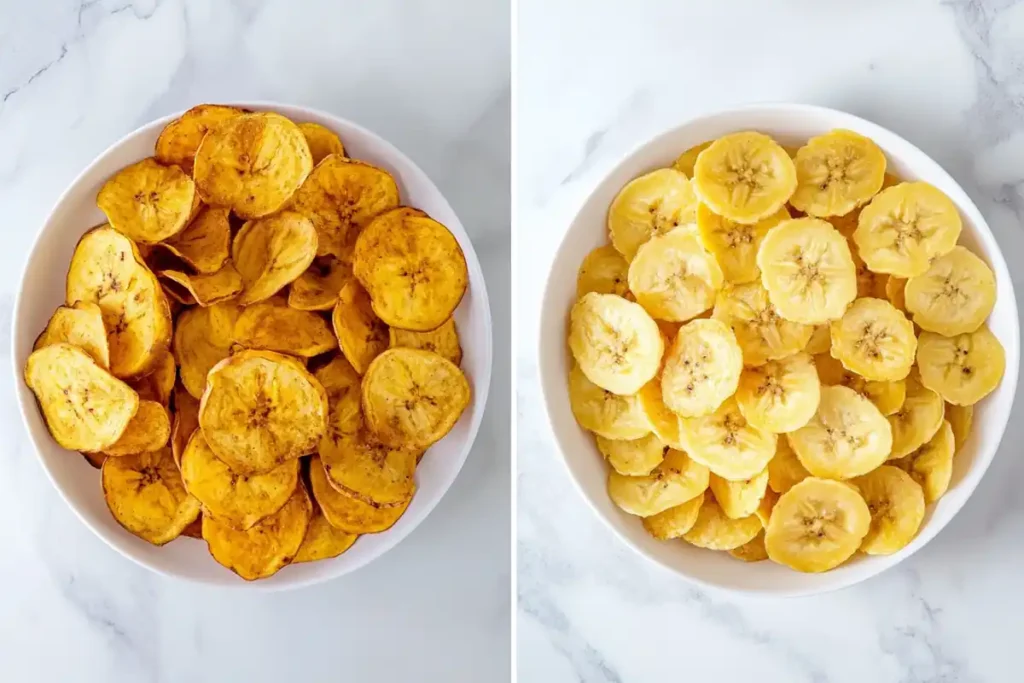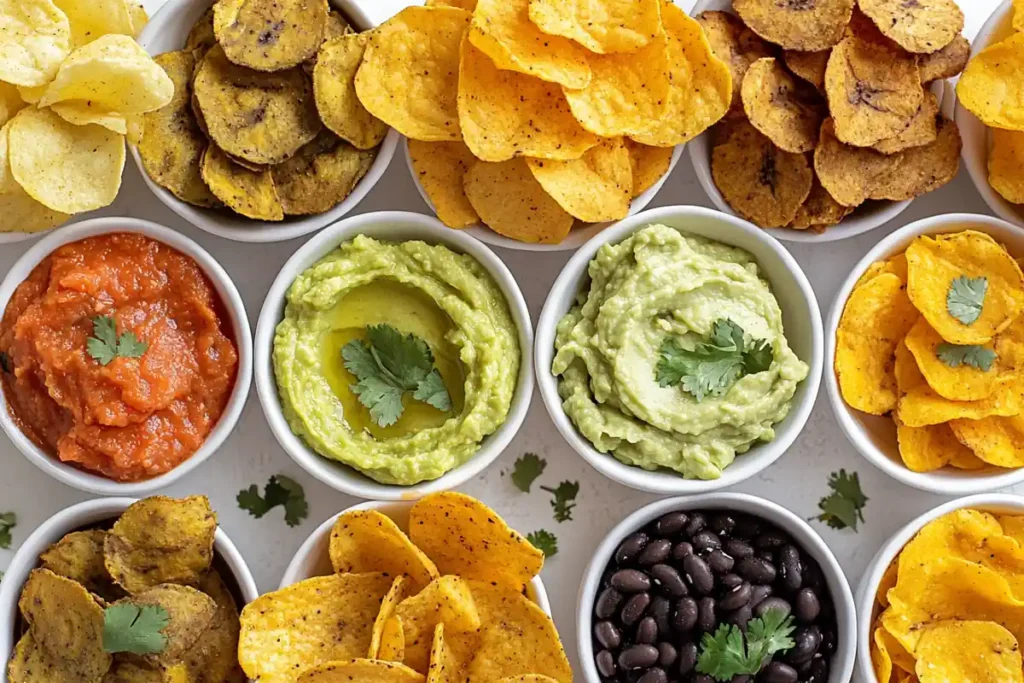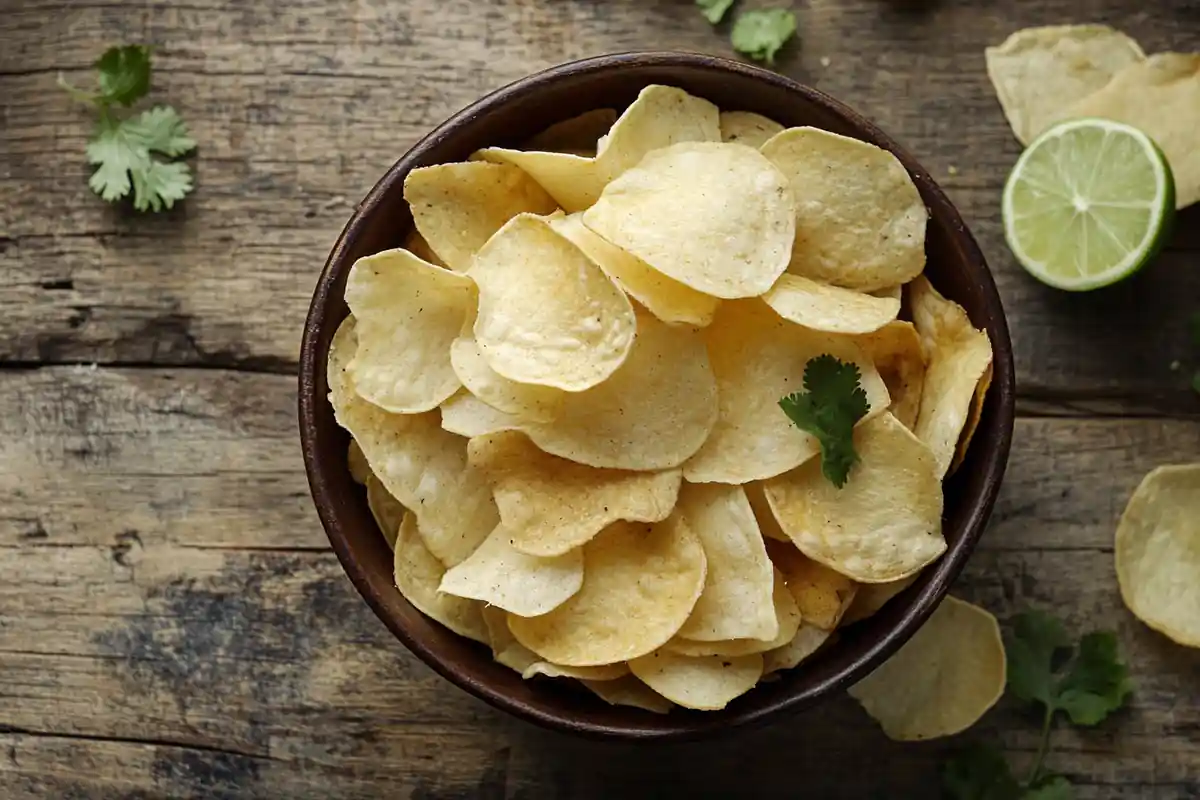Introduction
Undoubtedly, many snack enthusiasts wonder: What is another name for plantain chips? These crispy, thinly sliced snacks appear in countless cuisines, especially those influenced by tropical climates and rich culinary traditions. Comparatively, while banana chips have grown popular in recent years, plantain chips remain a cherished treat in regions where plantains thrive. Moreover, they have a distinctive taste and texture that sets them apart from other similar snacks. However, not everyone knows their other names or how they differ from banana chips, tostones, or even savory cassava chips. Therefore, this article explores their diverse appellations, cultural significance, preparation methods, serving suggestions, and more.
Initially, plantain chips seem simple. They start as unripe green plantains, sliced thinly, then fried until crisp, resulting in a salty, savory, and altogether addictive snack. Furthermore, their flavor profile changes depending on ripeness, frying technique, and spices used. Nevertheless, across various countries, these crispy treats hold special names and unique cultural connections. Eventually, you’ll discover that what is another name for plantain chips? depends on geography, tradition, and linguistic influences.
This guide helps you navigate the world of plantain chips, learn about their common synonyms—like chifles, mariquitas, and platanitos—and show you how to incorporate them into your culinary repertoire. Equally important, you’ll learn tips for choosing the best plantains, frying methods, nutritional benefits, storage advice, and even pairing suggestions for dips and seasonings. Consequently, by the end of this article, you’ll feel confident identifying various names for these savory snacks and perhaps even try making them at home.
Understanding Plantain Chips and Their Appeal

Initially, plantain chips might seem similar to banana chips. However, these savory chips differ significantly in flavor and texture. Because plantains contain more starch and less sugar, their chips turn out crispier and less sweet. Additionally, plantain chips offer a more complex, earthy, and somewhat nutty flavor. Generally, their crunch and subtle savory notes make them a delightful snack, especially for those seeking a salty, less sugary treat than banana chips.
Comparatively, plantain chips have emerged as a beloved snack among U.S. consumers who crave new flavors. Indeed, the snack’s growth in popularity can be attributed to increased interest in global cuisines, health-conscious snacking, and the influence of Caribbean, Latin American, and African communities in the culinary scene. Consequently, their presence on grocery shelves and specialty markets has expanded, allowing more people to enjoy these crispy delights.
Origins and Cultural Background

Until recently, many Americans remained unfamiliar with plantains. Yet plantains have been cultivated for thousands of years in tropical regions, particularly in Africa, Southeast Asia, and Latin America. Eventually, through trade and migration, plantains spread across various continents. Equally, local cuisines embraced these versatile fruits, turning them into everything from stews and porridges to fried snacks.
Undoubtedly, the tradition of making plantain chips has deep cultural roots. In tropical climates, drying, frying, and seasoning plantains allowed communities to preserve and enjoy them as a convenient, portable snack. In the Caribbean, for example, fried plantains accompany main dishes or serve as simple treats at roadside stalls. Similarly, in parts of Latin America, they are part of holiday feasts and everyday snacking rituals. Thus, plantain chips connect people to their culinary heritage and evoke fond memories of home.
What Is Another Name for Plantain Chips? Exploring Synonyms and Varieties
Now, let’s address the central question: What is another name for plantain chips? Indeed, different regions know them by various names:
- Chifles: In many South American countries, notably Ecuador and Peru, crispy fried plantain slices are known as chifles. Comparatively, these chips can be paper-thin and salted, providing a delicate crunch.
- Mariquitas: In Cuba, thinly sliced and fried plantains are often called mariquitas. Particularly in Miami’s Cuban communities, mariquitas appear as appetizers served with tangy mojito dipping sauce.
- Platanitos: In parts of Puerto Rico and the Dominican Republic, you might find plantain chips referred to as platanitos. Basically, these are a common snack at family gatherings and local markets.
- Tajadas: In some Latin American countries, thicker slices of ripe plantains fried until golden and caramelized are known as tajadas. Although sweeter than typical green plantain chips, tajadas still qualify as a variation that shows how names differ.
- Tostones (Patacones): While tostones or patacones are not exactly the same as thin plantain chips, they still represent a form of fried plantain. These twice-fried plantain discs are thicker and often served as a side dish. Nonetheless, they belong to the broader category of fried plantain snacks. Although some consider them different from chips, tostones share the same core ingredient and preparation concept.
Equally, in African countries like Nigeria or Ghana, fried plantain snacks might have local names unique to that region. Eventually, these chips—by any name—are essentially variations of fried plantain slices that embody local culinary traditions and flavor profiles.
Ingredients and How Plantain Chips Are Made
Initially, preparing plantain chips starts with selecting the right plantains. Specifically, choose green, unripe plantains because they deliver a starchy texture and savory flavor that define the crisp, salty snack. Moreover, a sharp knife or mandoline ensures thin, even slices that fry uniformly.
Subsequently, you must decide on a cooking method. Generally, deep-frying in oil yields the crispiest results. However, air-frying and baking are equally viable, healthier alternatives. After slicing the plantains, you can soak them briefly in salted water to enhance flavor and maintain color. Then pat them dry and fry in hot oil until golden and crunchy.
Afterward, drain them on paper towels and season with salt or other spices. Another approach involves adding chili powder, garlic, onion powder, or lime zest for a unique twist. Thus, experimentation with seasonings can transform simple chips into gourmet snacks.
Nutritional Profile and Health Considerations
While plantain chips offer a tasty treat, it’s important to consider their nutritional value. Comparatively, plantains are a source of complex carbohydrates, fiber, vitamins A and C, and minerals like potassium and magnesium. However, the cooking method largely affects their healthiness. Deep-frying adds fat and calories. Thus, moderation is key if you’re watching your intake.
Conversely, baking or air-frying plantain chips can substantially lower fat content and maintain more of the plantain’s natural nutrients. Equally, controlling the amount of salt and added seasonings helps keep these snacks aligned with healthier eating habits. Consequently, if you enjoy plantain chips regularly, choose lighter preparation methods and balance them with fruits, vegetables, and lean proteins.
Culinary Applications and Serving Suggestions
Generally, plantain chips shine as standalone snacks. However, they also serve as wonderful appetizers, canapés, or side dishes. Indeed, pairing them with creamy dips elevates their flavor. For example, guacamole’s rich creaminess complements the chips’ crunch, while a zesty salsa enhances their savory notes. Another suggestion involves serving them alongside ceviche, grilled shrimp, or black bean dip.
Moreover, crushed plantain chips can act as a topping for salads or as a textural element in soups and stews. Additionally, using them as a base for nachos or layering them with pulled pork, shredded cheese, and pico de gallo creates a fusion dish that surprises and delights. Particularly in gourmet kitchens, chefs incorporate plantain chips in creative ways, proving their versatility extends beyond a simple snack.
Comparing Plantain Chips to Other Snacks
At first glance, plantain chips resemble banana chips. However, banana chips are typically sweeter since ripe bananas have higher sugar content. Conversely, plantain chips emphasize a more savory flavor, making them an excellent alternative for those seeking less sweetness.
Comparatively, cassava chips share a similar crunch and starchy base, but their flavor is milder and less earthy. Potato chips remain the most famous crunchy snack in the U.S., yet plantain chips provide a more exotic and nutrient-rich option. Thus, while some flavors may overlap, each chip type offers unique qualities that appeal to different taste preferences.
Regional Variations in Flavor and Style
Chiefly, the seasoning of plantain chips varies widely by region. In some Caribbean areas, a simple sprinkling of salt suffices. Conversely, in Latin America, you might encounter chili-lime-flavored chips or those dusted with adobo seasoning. In African markets, spicy pepper blends or even smoky flavors might emerge.
Equally, as global fusion cuisine grows, chefs experiment with flavor twists like curry powder, jerk spices, and even truffle salt. Subsequently, plantain chips adapt to evolving culinary trends, ensuring they remain relevant and exciting. Altogether, this adaptability reflects the snack’s enduring popularity and cultural significance.
Packaging, Storage, and Shelf Life
When it comes to storage, keeping plantain chips crispy and fresh requires proper care. Generally, store homemade chips in airtight containers to prevent moisture absorption. Consequently, adding a small desiccant pack can help maintain their crunch. Undoubtedly, they taste best within a few days, though they can last a week or two if stored properly.
Commercially packaged plantain chips often contain preservatives or nitrogen-flushed packaging to extend shelf life. Thus, these chips remain crisp and flavorful for longer. Comparatively, homemade versions have a shorter shelf life, but their freshness and customizable flavor may compensate for that.
Where to Find Authentic Plantain Chips
Although plantain chips have entered mainstream supermarkets, certain specialty shops, such as Latin American, Caribbean, or African grocery stores, still provide more authentic varieties. Additionally, you might discover unique brands or freshly made chips at local farmers’ markets or gourmet shops.
Furthermore, online retailers offer a wide range of plantain chips, including organic, gluten-free, or exotically flavored options. Chiefly, always check ingredient lists and customer reviews to find the best quality and flavor. Finally, you might encounter plantain chips served in Caribbean or Latin American restaurants as a side dish or appetizer, allowing you to taste authentic regional specialties.
Conclusion
In conclusion, the answer to the question “What is another name for plantain chips?” depends largely on geography, culture, and culinary traditions. Whether known as chifles, mariquitas, platanitos, or any other local term, these crunchy treats reflect a rich tapestry of flavors from tropical regions around the world. Their increasing popularity is a testament to their unique taste, versatility, and global presence. By exploring various preparations, seasonings, and uses, you’re able to better understand and appreciate these snacks. Ultimately, plantain chips offer not just a delightful crunch, but a cultural connection to the diverse and delicious world of tropical cuisine.thumb_upthumb_down
FAQs
1. What are plantain chips called?
What is another name for plantain chips? They are often called chifles in Ecuador, mariquitas in Cuba, or platanitos in Puerto Rico. Another common term is tajadas, though these are often thicker and sweeter. Thus, the name varies depending on the region and cultural background.
2. What is the specific name for plantain?
The plantain is specifically known as Musa paradisiaca, a member of the banana family. While the word “plantain” generally refers to the starchy variety of banana-like fruits, each region may have local names for the plantain.
3. What is similar to plantain chips?
Similar snacks include banana chips, cassava chips, taro chips, and sweet potato chips. All of these are sliced and fried (or baked) root vegetables or fruits. However, plantain chips stand out for their distinct savory flavor and starchiness.
4. What is a fancy name for plantain?
A fancy name for plantain might be “cooking banana.” However, in some culinary circles, referring to them by their local names—like plátano macho in Mexico—adds an exotic flair. Indeed, describing them as “tropical plantains” or “artisan plantains” in gourmet contexts may also provide a fancier touch.

